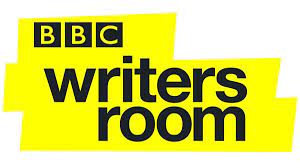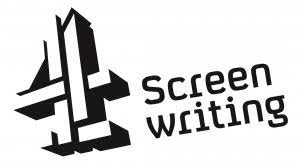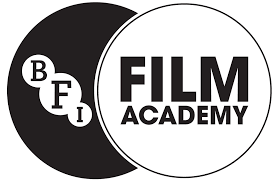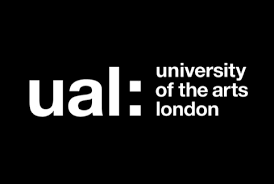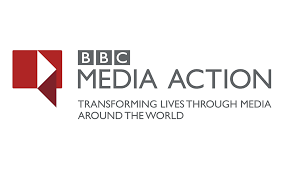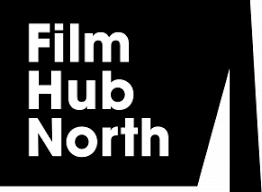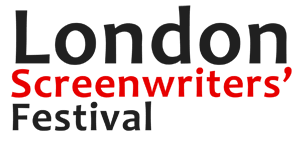Hi There,
This week, I’ve written about treatments, outlines, written pitches etc. This article should be appearing on the BBC writers room website blog in the next few weeks – so consider this a sneak preview for the subscribers to my newsletter!
WHAT ARE THEY?
Treatments, pitches, outlines, beat-sheets, etc etc. All of these documents are points on the journey to writing a script – and are guaranteed to make even the steeliest writer’s heart sink a little. But as writers, you need to learn to embrace them, even if you can’t quite get to love them! If you can enjoy writing these documents, and the process of creating them, it will be an enormous help to your success (and creative enjoyment) as a screenwriter.
One issue is definition. There are so many variations of these documents – both in what they get called – and in their function. And the various names seem to mean different things to different people.
It is really important that you know why you’re writing these documents, and who you’re writing them for. Every single drama producing indie will have a different brief, a different agenda, often a slightly different approach. Make sure you know what you’re being asked for. Once you’ve convinced a producer or script editor that your idea is worth pursuing, you need to know what they’re looking for in every draft you write.
You need to distinguish between selling documents (written pitches, treatments), written to convince potential employers of the power of an idea; and development documents (outlines, beat-sheets, etc) ie documents that you write, once a producer has committed to an idea, developing it on the path towards first draft script commission. These are mainly for your benefit as a writer, in planning the story, structure, tone and content of your script; but they’re also for your producer / script editor to track how the story is developing, and help you with their input and suggestions.
THEY’RE IMPORTANT
Once, as a screenwriter, you’ve written one or more cracking ‘spec’ screenplays that have started to get you noticed, and potential employers and literary agents have read the scripts and want to meet you, these shorthand documents (everything that isn’t a script) are of vital importance to you building and sustaining a career.
Working with so many writers on the Channel 4 course, I have grown to appreciate the value of these documents. From a professional POV, it’s really important for the writers on the course to get their heads round the idea that they need to nail the skill of writing these pre-script documents – they are the gateway to script commissions and an income!
And from my point of view as a script editor, and for producers and development executives working with writers on new ideas, they serve to provide evidence that very limited development bucks are going to be well-spent on a script commission. Paying for a script is often a big financial shot-in-the-dark for small, cash-strapped indies. So as writers you need to be able to provide your producer with as much evidence as possible that the story will be brilliant before you’re given the go-ahead on a first draft script.
I have come to realise over the last few years – working with so many wonderful writers – how good these documents can be at their best. There have been several outlines that 4screenwriting writers have written that I have enjoyed almost as much as a brilliant script. At their best, outlines can be gripping, exciting, emotive pieces of visual story-telling that give a clear indication that the script that follows is going to be equally wonderful. I haven’t yet read an exciting, excellent outline that doesn’t become an exciting, excellent script.
Written pitches, on the other hand, aren’t pieces of structured story-telling in the same way as outlines and scene-by-scenes are. And one of the issues is that writing a pitch is a very different skill to writing a screenplay. There are some wonderful screenwriters who are not good at writing pitches. And vice versa.
TREATMENTS / PITCHES
1 BREVITY
The bottom line is that producers and script editors want from you the shortest document possible to convince them of the strength and viability of your idea. Initially, if you can distil your brilliant idea down into a single page that is going to excite producers, your idea is much more likely to get read and taken seriously than a speculative 20 page document.
These are hard because you have to leave so much out while at the same time including everything that is important and integral to the idea.
2 THE WRITER’S AGENDA / THEME
With one page pitches and treatments, it’s really important to start off with some sort of overview that expresses the idea as succinctly and persuasively as possible, and that states your agenda as a writer for pursuing this project, and something about the story’s themes – what it’s about.
The hardest pitches to read are those that are pure plot with no sense of tone, context or writer’s approach. The plot and characters – the meat of the story – will be far more accessible if we read them knowing why you as a writer are telling this story, what you bring to it, and why it’s a story you NEED to write. It’s all about context. And remember – you’re not just pitching an idea, you’re also pitching yourself as a writer to some extent – justify why you are THE writer to tell this story.
3 CONTENT
It’s always important to really deliver on the story front – to demonstrate through story events and character action just how exciting, moving, emotive etc this is going to be (rather than just writing, ‘this is going to be the ultimate emotional rollercoaster – exciting, moving and emotive…’). Deliver – don’t tease. And if your story has the most wonderful narrative twist / reveal – tell us what it is. This isn’t the place to hold back.
The less good pitches deal in empty promises. It’s a good idea to convey your sense of excitement as a writer in a project – but it needs to be backed up by hard evidence.
So, if you’re pitching a comedy, your one-page has to be funny – and that’s tough.
OUTLINES / STORY DOCUMENTS
1 VISUAL STORY-TELLING
For me, the important principles of writing effective outlines are to write visually and explain nothing. The outline has to work in the same way as the script will do. It needs to dramatise the story, and leave interpretation of the story action up to the reader – in the same way as the best scripts / films.
2 DON’T EXPLAIN
When writers fill outlines with explanation of character motive, it gets in the way of the story action, and defeats the purpose of the document – which is to show how the story is going to be dramatised.
LEARNING FROM THE BEST….
…is a problem because really great examples of these documents are very hard to come by. Unlike screenplays they don’t seem to very often make their way onto the internet for public consumption.
I’m not exactly sure why this is – except for the fact they’re so very hard to get right! And because, even more than screenplays, they’re just seen as a step towards something else – (script, film). Not being an art form in their own right, there don’t seem to be many examples in the public domain of how to write these documents.
And they’re so damned hard to get right. Condensing an idea to its shortest possible form while also trying to do it full justice is almost asking the impossible.
On the whole writers hate writing these sorts of documents. Because they’re so hard to write. Because they’re considered not creative in the same way as writing the screenplay. And because often you don’t get paid for them. And even when you do, the money you receive is often an inadequate reflection of the work you have to put in to get them right.
Particularly when you get onto the advanced structure stage of these documents (detailed outlines, beat-sheets, scene-by-scenes) often writers are doing 75% of the writing / creation process for only 10% of their script fee.
But here are some examples of these documents, and how they can work at their best –
- In this case, (in a one page pitch) in expressing the themes, the writer’s agenda
‘SPOILED is about generational responsibility – should we leave the world a little better than we found it, should we do everything we can to ensure our children have a better future than we had? Should parents give up their savings, or even their dreams, to help their kids succeed? But what if they then, in turn, do the same for their children?’
A clear, economical expression of something that seems to be quite zeitgeisty – but also universal. And the story itself – about a father trying to protect his son, after the son has been responsible for killing a pedestrian in a road accident – clearly dramatises those themes.
- A writer articulating her agenda for telling a story –
‘THE CONTRACT is about the takeover of the British state by multinationals such as G4S and Serco. Although entirely fictional, it is inspired by real stories and the result of intensive research.
Between them, G4S and Serco not only provide a vast swathe of the UK’s security services (running prisons, immigration, Olympics security etc) they are also increasingly involved in health and care provision. As the state is slowly run down, the government will become increasingly subservient to the corporations. Quite simply, one day soon, the country will not be able to run without them.
These multinationals have tentacles that stretch into all of our lives. Who are they accountable to? If things go wrong, where does that leave us, the users of these services? It’s certainly in the interest of these global providers to keep any ‘blunders’ under wraps. Running old people’s homes and hospitals is big business; providers seem to be willing to go to almost any length to keep their contracts. Are these companies, like the banks, now simply too big to fail? Will they – with the government’s help – do anything to continue to serve us?’
I think the writer passionately and articulately expresses her reasons for writing this thriller. There is a strong political agenda and a clear sense of moral indignation – which instantly made me buy into this story.
- And finally, an excerpt from a story outline, a project at a more advanced stage. This is from a 6 page outline for the first 1 hour (46mins) of a C4 3-part serial, ie the final story document by the writer before she wrote the 1st draft script –
‘Laurie and George sit in the headmistress’s office. They have three black eyes in a row. Laurie looks totally numb. They listen to a recording George made of a group of boys shouting ferocious abuse at him. The headmistress shifts uncomfortably in her seat. She tries to turn the recording off but can’t. The abuse escalates. She pushes at the buttons trying to turn it off. The volume increases. George turns it off.
The flustered headmistress says it’s not acceptable to record other pupils without their knowledge. She talks about procedures, protocols and counselling. She says that she thought Laurie was ‘on the same page’ as the school on this matter and is frankly surprised that they would jeopardise the mediation process in this way.
As they leave, Raymond Raisin, who is the size of a man, is sitting outside the headmistress’s office. He makes a gun gesture at George’s head as they pass and mouths ‘snitch’.
Laurie and George drive home in silence.’
I like many things about this outline – it is a shining example of how these story documents can work at their best. When I first read this, I was hooked – I was immediately engaged by the two lead characters, Laurie and George, and I wanted to know what would happen next. Even this short section gives a clear example of the slightly heightened tone – drama with a hint of dark comedy, but all rooted in a recognisable reality.
This section shows how the story will cut from scene to scene – and these cuts energise the story-telling effectively eg the cut from Raymond Raisin’s threat, to the silent car journey.
The headmistress’s office scene shows a strong sense of original, comic, visual story-telling (the three black eyes in a row) and an appreciation of character dynamics within a scene (the headmistress ‘shifts uncomfortably in her seat’, can’t turn off the tape recorder). There’s a pleasing irony to the way the child George has the status, controls this scene. And the characters’ emotional states are dramatised rather than explained
A big thank you to writers SARAH PAGE, ANNA SYMON and REGINA MORIARTY for allowing me to share their work.
The next newsletter will be on Friday July 14th.
Until then,
All the best
Phil
PHILIP SHELLEY
@PhilipShelley1
June 30th 2017


